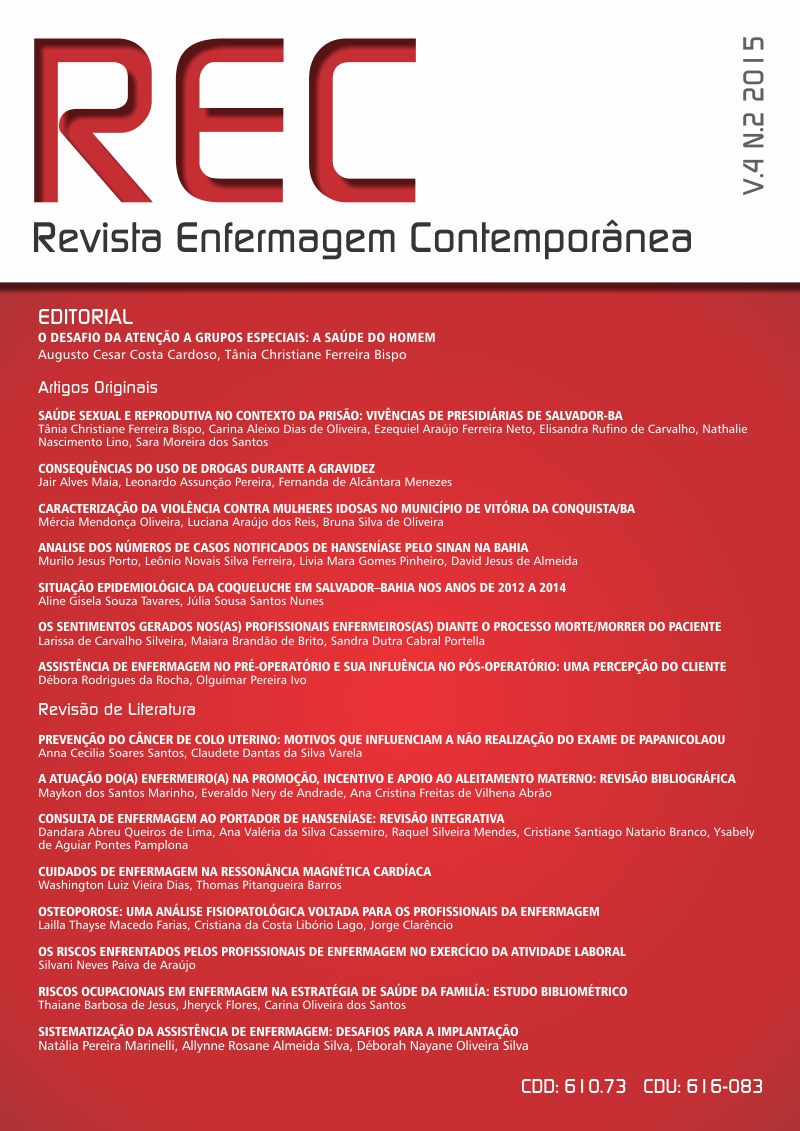OCCUPATIONAL RISKS IN NURSING IN THE STRATEGY FAMILY HEALTH STRATEGY: A BIBLIOMETRIC STUDY
DOI:
https://doi.org/10.17267/2317-3378rec.v4i2.711Keywords:
Occupational Risk, Health strategy, NursingAbstract
In the Family Health Strategy (FHS), nursing is subject to occupational hazards, with the responsibility which they refers, their work process and how are their institutional and professional relationships in the work environment. In this context bibliometrics come to know and assess the productivity, researchers, dissemination and information published on the subject. Objective: To examine the original articles reporting the occupational hazards of nursing in the context of the ESF. Methodology: to map bibliometric study of the original publications on occupational risks, nursing and ESF in BDENF database published from 2002 to 2014, analyzed the frequency of each descriptor, amount of publication, Quails and impact factor for each periodic, language, region / institutions with more publications, titration, training and place of work of the authors. For analysis of data was made frequency, percentile and average. Results: It was found 229 and 46 selected publications, with few articles using the three descriptors and the descriptor “occupational hazard” it was the most used with 46 (48,9%) and the majority 137 (97,1%) of the authors are nurses, 94 (66,2%) teachers and 55 (40,1%) with a doctorate. The predominant language was Portuguese, highlighting Journal of Nursing UERJ and Latin American with more publications, and magazines with Qualis B2 it was the most adopted by the authors. The Southeast Region was the most productive and the mostly of the institutions are public. Conclusion: limited number of works related to the theme, being necessary to broaden discussions about occupational hazards and the specifics of the ESF, and note the nurses have an important role in science communication.



